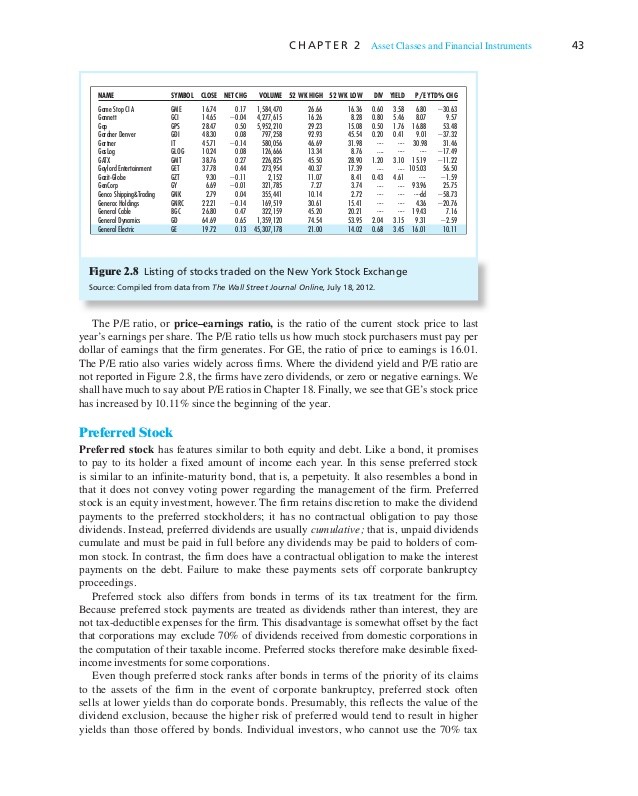Adding preferred stocks to your portfolio a brief primer
Post on: 28 Декабрь, 2015 No Comment

Some preferred stocks offer a relatively safe way to gain above average yield or income in a rising interest rate environment. Here’s how they work.
Vintage 1920s preferred stock certificate for the old B&O Railroad, long since merged. It looks like a regular stock certificate, but note the red PREFERRED stamped on the certificate. (Screen capture of vintage certificate image. Not valid for redemption.)
WASHINGTON, February 5, 2015 – Preferred stocks typically trade on the market just like common shares of the same company. The big difference is that when issued, they’re priced at “par”—most often $25 per share—with a fixed interest rate “coupon” that will never change. Thus, they behave a lot like bonds.
That’s why some investors prefer to hold some preferreds in their portfolios. They don’t cost as much as entire blocks of single bond issues where, to get the best price, you need to acquire a face amount of $25,000 a pop. (You can get smaller amounts, usually in blocks of $5K, but they’re harder to trade and brokers sniff at them.) But they have the roughly the same advantage of bonds: a designated, fixed rate of return, perfect for investors primarily seeking income, i.e., retirees.
How preferred stocks are (sort of) like bonds and stocks in one
Like bonds when they’re first issued, shares of preferred stocks are price at “par”—usually, but not always, $25 per share. At that price, most preferred stocks pay a fixed dividend, one that never (usually) goes up or down for most issues. But more on this later.
There are two notable differences between common stocks and preferred stocks. First of all, preferred shares, unlike common shares, are not voting shares. You have no “say” in what the company does—as if most of us holding common shares can actually influence boards of directors anyway, but that’s still a difference. No votes.
Second of all, and perhaps more importantly, preferred shares are considered “senior” to common shares in the same company. This means two additional things: In the worst of all possible worlds, if the company you’re investing in goes belly up, you, as a holder of a company’s preferred shares, get in the line ahead of those who hold common shares.
In reality, that may be cold comfort, because, in turn, bond holders—particularly secured bond holders—are in line in front of preferred stock holders. But if the worst does happen, preferred holders do at least have dibs on what’s left before those wretched holders of the common can fight over the scraps, if any.
Less drastic is what happens when a company is strapped for funds, say, during an economic downturn. Looking to save money, they decide to start cutting dividends. Under the rules, they have to put the dividend axe to the common shares first. Only after they entirely eliminate the common dividend can they go after the preferred shareholders and cut their dividends. But again, a little more on this shortly.
Most preferreds are “perpetual.” That is, they do have a call date, but it’s not mandatory. The call dates for term preferreds are mandatory. Thus, these securities, like their perpetual siblings, trade like bonds, up or down depending on the direction of interest rates. But, in a (presumably) rising interest rate environment like the one we have currently, they’ll hold their price better than their perpetual pals, though they’ll carry a lower fixed interest rate due to this stability.
A second standard variety of preferred stock is called term preferred. While regular preferrers have call dates, or dates upon which or after which the issuer can buy them back and cease paying dividends, in practice, they dont really have to call them, even if theyre not specifically called perpetual.
But companies also issue term preferred stocks. These shares are just like the first kind, including provisional call dates. But they also have a firm end date at which point theyre redeemed. Youre paid back at par value plus dividends owed, and that issue of preferred stock is retired. In a rising interest rate environment, these are the kinds of preferrers that deserve a second look.
Oh, about these bond price fluctuations. New bonds are priced at “par,” which means $1,000 per bond, given minimum multiples. This is also called “face value.” Immediately after pricing, these same bonds will trade above or below $1,000 based on the daily fluctuation of interest rates. If interest rates go up, the bond price goes down. If interest rates go down, the bond price goes up. That’s due to the fixed interest rate on the bond. Once it’s fixed, it’s fixed and it never changes.
For that reason, if interest rates go up tomorrow and you want to sell your bond, you’ll need to sell it for at least a small loss. That’s because it’s price has gone down a bit, making your fixed interest rate (which used to be called a “coupon”) effectively equivalent to a new bond sold today. The opposite holds true if interest rates go down.
Now if you want to sell your bond, a buyer will have to pony up and pay a bit more for your bond than for a new one because your “coupon” is higher. It all makes sense if you think about it. Bonds will tend to conform to a given interest rate on a given day.
Unlike common stocks, however, bonds do generally have a maturity date. That’s the date they stop paying interest and return the principal to you, i.e. that $1,000 per bond. If you paid more than that for an existing bond, you’ll lose some principal at that time. But if you got lucky and bought the bond on the open market for less than $1,000, you’ll still get the $1,000 because that’s the deal. So you actually make a capital gain on the bond.
The Prudent Man took a big chance back in 2009 and bought a bunch of bonds when everyone was panicking—some as low as 50 cents on the dollar. When they matured, he got the whole dollar, a very rare 50 percent capital gain on the bond. It was fun, but such opportunities are rare—and scary when they happen.
But what does all this have to do with preferred stocks? Simple. Preferreds, or at least most of them, tend to perform just like bonds. In the case of preferreds, $25 per share is “par” value, most of the time. So, between the day of issue and the day the preferred issue is either called or matures, the price of the preferred will fluctuate above or below $25 per share.
If you buy shares above $25, you’re paying a premium. If you buy shares below $25, you’re buying them at a discount. Obviously, the latter situation is desirable, but in the end, this depends on the yield you want and how long you intend to hold these securities.
Buying preferred shares at a premium, meaning at a price over $25 (generally), you’ll take a loss if they’re called or matured at their original $25 price. But this might not matter much if you’ve collected a 5 percent dividend annually over the past 10 years. It’s really up to you.

Buying shares at a “discount”—i.e. below $25 per share, means that when they’re called or matured, you’ll actually make a capital gain since the issuer has to redeem these shares at the original $25.
Are preferred dividends stable? Maybe. Read on.
About the stability of those dividends. As we mentioned, if a company runs into some heavy economic waters and has to start cutting dividends, it has to cut the common dividend first, until there’s no dividend left to cut. Only then can it start cutting dividends to its preferred shares.
If your preferred dividend is cut or eliminated, normally, that’s tough luck, the way the cookie crumbles. But if, after a time, you’re still holding the preferred and the company starts to make a healthy profit again, they have to restore dividends to their preferred stocks first before restoring them to the common shares.
But if you hold a special preferred stock called a “cumulative preferred” stock, well… your dividends could get cut or eliminated too, as in the above scenario. But once the company comes around again and has to start restoring dividends to the preferred stock first, this gets to be fun again.
Because if you hold a “cumulative preferred” stock, not only do you get priority for getting your dividends paid again. You also get a bonus for your patience in suffering—the company has to pay you all the back dividends it owes as well. Hence, the term, cumulative.
Further, if you’ve bought a cumulative preferred at a discount while it’s not paying any dividends, once things improve and the company has to pay all the cumulative but deferred dividends, they’ll all go to you, the current holder.
Downside? The company never recovers. You know how that ends. This rarely happens, but it can.
Variations on a familiar theme
There are variations on preferred stocks that we haven’t discussed, such as “convertible preferreds” which are convertible under certain situations to a company’s common stock. But these and other unusual varieties are rather different animals, and we’ll bring them up in a future column.
As for now, if we start pointing out various bargains in the preferred stock universe, now you’ll know what we’re talking about and what kind of benefits this slightly different variety of stock can offer you, particularly if you’re seeking ways to augment your income with only reasonable risk.














